DS Automobiles DS 4 vs SsangYong Korando – Differences & prices compared
Compare performance, boot space, consumption and price in one view.
Find out now: which car is the better choice for you – DS Automobiles DS 4 or SsangYong Korando?
The DS Automobiles DS 4 (Hatchback) comes with a Diesel, Plugin Hybrid or Petrol MHEV engine and Automatic transmission. In comparison, the SsangYong Korando (SUV) features a Petrol or Electric engine with Manuel or Automatic transmission.
When it comes to boot capacity, the DS Automobiles DS 4 offers 430 L, while the SsangYong Korando provides 551 L – depending on how much space you need. If you’re looking for more power, decide whether the 224 HP of the DS Automobiles DS 4 or the 190 HP of the SsangYong Korando suits your needs better.
In terms of consumption, the values are 1.40 L per 100 km for the DS Automobiles DS 4, and 16.80 kWh7.50 L for the SsangYong Korando.
Price-wise, the DS Automobiles DS 4 starts at 33100 £, while the SsangYong Korando is available from 27000 £. Compare all the details and find out which model fits your lifestyle best!
DS Automobiles DS 4
The DS 4 stands out in the compact premium segment with its striking design and distinctive flair. Inside, it offers a blend of luxury and comfort, featuring elegant materials and cutting-edge technology that enhance the driving experience. With its engaging performance and attention to detail, the DS 4 captures the essence of modern sophistication on the road.
details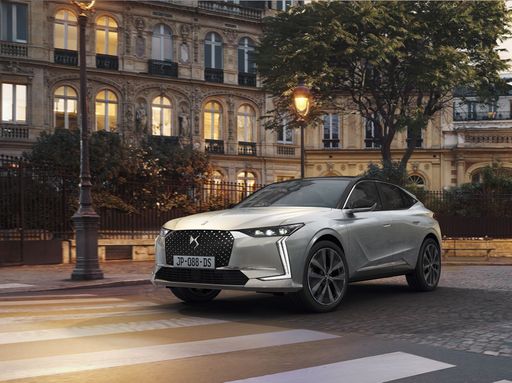 @ media.stellantis.com
@ media.stellantis.com
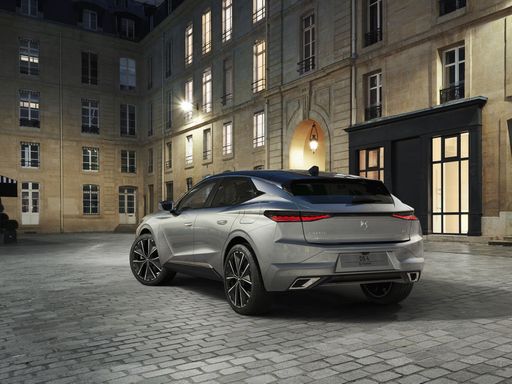 @ media.stellantis.com
@ media.stellantis.com
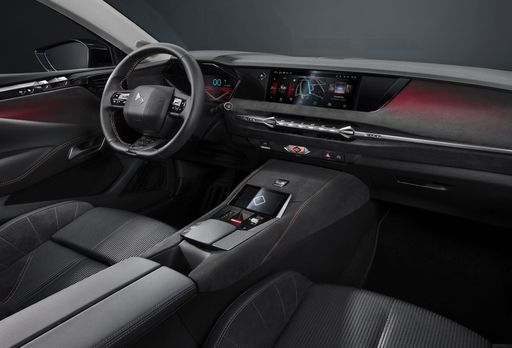 @ media.stellantis.com
@ media.stellantis.com
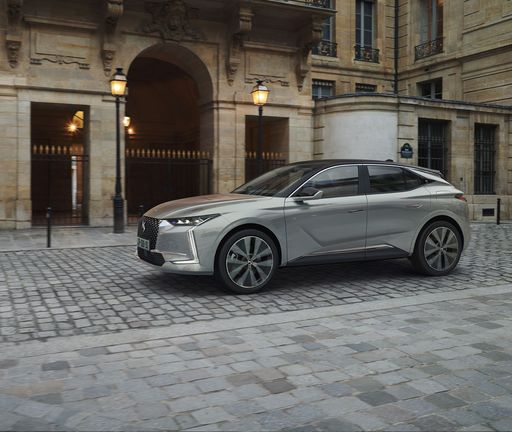 @ media.stellantis.com
@ media.stellantis.com
SsangYong Korando
The SsangYong Korando offers a blend of contemporary design and practicality, making it an appealing choice for urban adventurers. Its spacious interior and comfortable seating ensure a pleasant driving experience for both driver and passengers. With its reliable performance and advanced features, the Korando stands out in the competitive SUV market.
details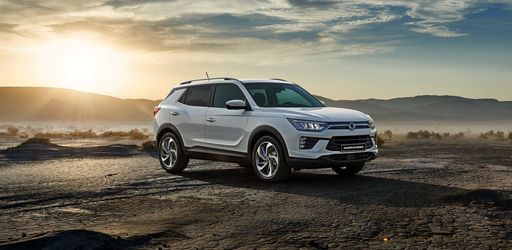 @ Ssangyong
@ Ssangyong
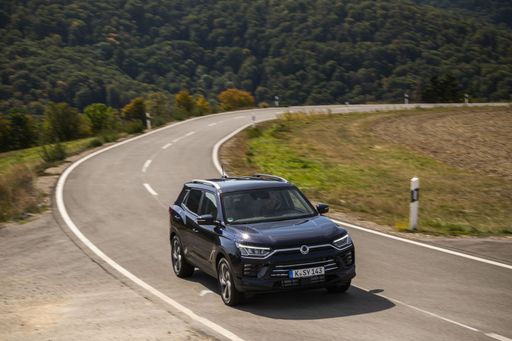 @ Ssangyong
@ Ssangyong
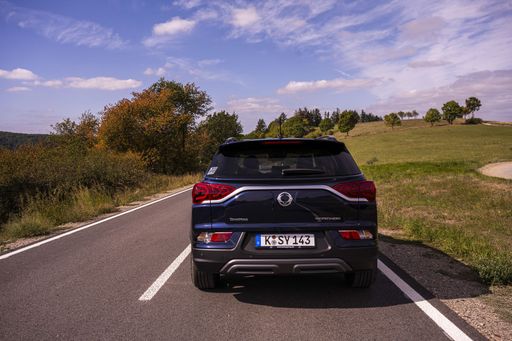 @ Ssangyong
@ Ssangyong
 @ Ssangyong
@ Ssangyong
 @ Ssangyong
@ Ssangyong

|

|
|
|
|
Costs and Consumption |
|
|---|---|
|
Price
33100 - 46200 £
|
Price
27000 - 42000 £
|
|
Consumption L/100km
1.4 - 5.2 L
|
Consumption L/100km
7.5 - 8.6 L
|
|
Consumption kWh/100km
-
|
Consumption kWh/100km
16.80 kWh
|
|
Electric Range
62 km
|
Electric Range
339 km
|
|
Battery Capacity
10 kWh
|
Battery Capacity
-
|
|
co2
32 - 137 g/km
|
co2
0 - 197 g/km
|
|
Fuel tank capacity
42 - 53 L
|
Fuel tank capacity
50 L
|
Dimensions and Body |
|
|---|---|
|
Body Type
Hatchback
|
Body Type
SUV
|
|
Seats
5
|
Seats
5
|
|
Doors
5
|
Doors
5
|
|
Curb weight
1486 - 1790 kg
|
Curb weight
1517 - 1840 kg
|
|
Trunk capacity
390 - 430 L
|
Trunk capacity
551 L
|
|
Length
4400 mm
|
Length
4450 - 4465 mm
|
|
Width
1830 mm
|
Width
1870 mm
|
|
Height
1470 mm
|
Height
1620 - 1645 mm
|
|
Payload
410 - 442 kg
|
Payload
410 - 463 kg
|
Engine and Performance |
|
|---|---|
|
Engine Type
Diesel, Plugin Hybrid, Petrol MHEV
|
Engine Type
Petrol, Electric
|
|
Transmission
Automatic
|
Transmission
Manuel, Automatic
|
|
Transmission Detail
Automatic Gearbox, Dual-Clutch Automatic
|
Transmission Detail
Manual Gearbox, Automatic Gearbox, Reduction Gearbox
|
|
Drive Type
Front-Wheel Drive
|
Drive Type
Front-Wheel Drive, All-Wheel Drive
|
|
Power HP
130 - 224 HP
|
Power HP
163 - 190 HP
|
|
Acceleration 0-100km/h
7.7 - 10.9 s
|
Acceleration 0-100km/h
8.40 s
|
|
Max Speed
203 - 233 km/h
|
Max Speed
156 - 191 km/h
|
|
Torque
230 - 360 Nm
|
Torque
260 - 360 Nm
|
|
Number of Cylinders
3 - 4
|
Number of Cylinders
4
|
|
Power kW
96 - 165 kW
|
Power kW
120 - 140 kW
|
|
Engine capacity
1199 - 1598 cm3
|
Engine capacity
1497 cm3
|
General |
|
|---|---|
|
Model Year
2024 - 2025
|
Model Year
2021 - 2023
|
|
CO2 Efficiency Class
E, B, D
|
CO2 Efficiency Class
F, G, A
|
|
Brand
DS Automobiles
|
Brand
SsangYong
|
DS Automobiles DS 4
Introducing the DS 4: A Unique Blend of Luxury and Performance
In the competitive world of automotive design, the DS Automobiles DS 4 stands out as a remarkable fusion of elegance, cutting-edge technology, and impressive performance. This hatchback, which continues to captivate enthusiasts since its launch, showcases a commitment to delivering a premium driving experience combined with innovative solutions that adapt to the demands of modern drivers.
Dynamic Engine Options for Every Driver
The DS 4 is available in a variety of engine configurations, catering to diverse preferences among drivers. It features a range of powertrains including diesel, petrol, mild hybrid electric vehicles (MHEV), and plug-in hybrids. With options like the 130 HP BlueHDi Diesel and the Hybrid 136 Petrol MHEV, each vehicle is designed to deliver efficient performance. The plug-in hybrid variant, boasting a robust 224 HP, offers an electric range of up to 62 kilometers, making it ideal for urban commuting while supporting eco-friendly initiatives.
Impressive Technical Specifications
With an array of technical specifications, the DS 4 provides both power and efficiency. For instance, the 130 HP PureTech petrol engine is coupled with a smooth automatic gearbox that enhances the overall driving experience. Depending on the variant, the DS 4 achieves impressive acceleration figures, with the Plug-in Hybrid reaching 0-100 km/h in just 7.7 seconds.
Fuel efficiency is another strong point, particularly with the BlueHDi Diesel's consumption rate at 5.2 L/100 km. The vehicle’s CO2 emissions also vary across models, with eco-friendly options like the plug-in hybrid showing a commendable 32 g/km. This range of specifications allows drivers to choose a version that suits their style and needs while maintaining a focus on sustainability.
High-End Comfort and Innovative Technology
DS Automobiles has prioritized luxury and comfort in the DS 4, ensuring that every journey is enjoyable. With a spacious interior featuring elegant materials and thoughtful design elements, the DS 4 incorporates advanced technology seamlessly. The car boasts a range of trims, including the Collection "Antoine de Saint Exupéry" and Étoile Alcantara, offering various customization options for a personalized driving experience.
The technology highlights of the DS 4 include a state-of-the-art infotainment system and advanced connectivity features that keep drivers connected and entertained on the road. The inclusion of driver assistance systems enhances safety and facilitates a more relaxed driving experience, allowing the driver to focus on the joy of driving.
Safety Meets Innovation
Safety is paramount in the design of the DS 4, which comes equipped with a suite of advanced safety technologies. These include lane-keeping assist, adaptive cruise control, and parking sensors, all contributing to a robust safety profile. The vehicle’s structure and safety features have been engineered to protect passengers and enhance overall collision performance.
Conclusion: A Modern Classic in the Making
The DS 4 by DS Automobiles represents the future of hatchback design, weaving together luxury, performance, and innovative technology into a cohesive package. Its diverse engine choices, cutting-edge safety features, and lavish interiors make it a compelling option for those seeking a vehicle that stands apart in style and functionality. As automotive enthusiasts continue to seek vehicles that are not only practical but also a joy to drive, the DS 4 is well-poised to make its mark in the automotive landscape.
SsangYong Korando
Discovering the SsangYong Korando: Combining Performance with Innovation
The SsangYong Korando has persistently evolved, emerging as a formidable presence in the compact SUV segment. With a blend of intriguing design, versatile engine options, and cutting-edge technology, the Korando aims to cater to a diverse array of driving preferences and needs. In this article, we delve into the technical intricacies and pioneering innovations that define the vehicle.
A Versatile Engine Line-up: Catering to Petrol and Electric Enthusiasts
The Korando provides a remarkable variety of powertrains, accommodating drivers who favour both traditional petrol engines and modern electric motors. For petrol enthusiasts, the Korando comes equipped with a 1.5 GDI-T engine, boasting a power output of 163 PS. Available in both manual and automatic transmission, and offering either front-wheel or all-wheel drive, these variants promise a dynamically engaging driving experience.
The brand’s commitment to sustainability is evident with the introduction of the E-Motion model, which is powered by an electric motor delivering 190 PS. With a commendable range of 339 km and an energy consumption of 16.8 kWh/100km, the E-Motion exemplifies SsangYong's ambition to shape the future of eco-friendly motoring.
Technical Excellence: Performance and Efficiency
With a peak speed ranging between 156 to 191 km/h, the Korando ensures that drivers experience both agility and responsiveness. The petrol variants offer a respectable efficiency, with fuel consumption spanning from 7.5 to 8.6 L/100km, while the electric variant promotes zero emissions. This makes the Korando an optimal choice for those conscious of both performance and environmental impact.
Acceleration from 0 to 100 km/h in just 8.4 seconds—paired with a torque range of 260 to 360 Nm—ensures an exhilarating ride whether navigating city streets or venturing onto open highways. Moreover, with a robust towing capacity, the Korando stands as a reliable companion for any adventure.
Interior Quality and Innovative Features
Inside the Korando, occupants are greeted by a spacious cabin designed with emphasis on comfort and practicality. Advanced infotainment systems seamlessly integrate with connectivity features, ensuring that every journey is both entertaining and stress-free. Emphasising safety, the Korando is equipped with multiple driver-assistance systems, including adaptive cruise control and lane-keeping assist.
Mirroring its exterior aesthetics, the interior is crafted with premium materials, providing a serene ambience throughout the ride. With abundant luggage space, a family of five can effortlessly embark on long-distance travels without compromises on space or comfort.
Conclusion: A Synergy of Tradition and Modernity
The SsangYong Korando seamlessly merges robust performance with cutting-edge innovation, appealing to a wide demographic of drivers. Whether drawn to the unmistakable power of its petrol engines or the sustainable allure of its electric variant, prospective owners are sure to find a model that complements their lifestyle. The Korando remains an impactful player in the SUV landscape, continually adapting to the demands of modern-day motoring while staying true to its heritage.
The prices and data displayed are estimates based on German list prices and may vary by country. This information is not legally binding.
